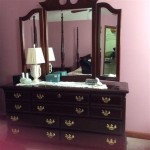What Are Good Colors For A Bedroom
Selecting the right colors for a bedroom is a crucial aspect of interior design, significantly impacting the room's ambiance, and ultimately, the occupant's sleep quality and overall well-being. The bedroom, intended as a sanctuary for rest and rejuvenation, should be decorated with colors that promote relaxation, tranquility, and a sense of personal comfort. This article will explore various color options suitable for a bedroom, considering psychological effects, design principles, and popular trends, with the aim to assist individuals in making informed decisions about their bedroom color palettes.
Color psychology plays a key role in determining suitable bedroom colors. Colors evoke different emotions and can influence mood and behavior. Therefore, understanding the psychological effects of different hues is essential for creating a truly restful and calming environment. The principles of color theory, which encompasses elements like complementary colors, analogous colors, and color harmony, also guide effective color scheme creation. By carefully considering these factors, it is possible to transform a bedroom into a haven that supports relaxation and promotes restful sleep.
The Calming Effects of Blue and Green
Blue and green are frequently cited as excellent choices for bedrooms due to their inherent calming and relaxing properties. Blue, often associated with the sky and the ocean, is known to lower heart rate and blood pressure, effectively reducing feelings of anxiety and stress. Lighter shades of blue, such as powder blue or sky blue, are particularly effective at creating a serene and airy atmosphere. Deeper blues, like navy or indigo, can evoke a sense of sophistication and tranquility, but should be used sparingly or balanced with lighter accents to prevent the room from feeling too dark or overwhelming.
Green, representing nature and growth, is another color that naturally promotes relaxation and harmony. It is a versatile color that can be adapted to various bedroom styles, from minimalist to traditional. Soft greens, such as sage green or mint green, create a soothing and refreshing environment, while deeper greens, like forest green or emerald green, can bring a sense of grounding and connection to nature. Combining blue and green in a bedroom color scheme can create a balanced and harmonious space that promotes both relaxation and rejuvenation.
When incorporating blue and green into a bedroom, consider the undertones of the chosen shades. Blue can have warm or cool undertones, and the same applies to green. Selecting shades with similar undertones creates a more cohesive and harmonious look. Also, consider the amount of natural light the room receives. In rooms with limited natural light, lighter shades of blue and green will help brighten the space and prevent it from feeling too dark or gloomy. Conversely, in rooms with abundant natural light, deeper shades can create a more dramatic and intimate atmosphere.
The Neutral Palette: Whites, Grays, and Beiges
Neutral colors, including whites, grays, and beiges, are classic and versatile choices for bedrooms. These colors provide a blank canvas that can be easily adapted to various design styles and personal preferences. White, representing purity and cleanliness, creates a bright and airy atmosphere, promoting a sense of calm and simplicity. It is an excellent choice for small bedrooms, as it helps to make the space feel larger and more open. However, using too much white can make the room feel sterile or cold, so it is important to incorporate texture and warmth through other elements, such as bedding, rugs, and artwork.
Gray, a sophisticated and neutral color, offers a range of shades from light to dark, allowing for a variety of design possibilities. Light grays, such as silver or dove gray, create a calming and elegant atmosphere, while darker grays, such as charcoal or slate gray, can add depth and drama to the space. Gray is a versatile color that pairs well with a variety of accent colors, allowing for personalization and customization. It can be used to create a modern, minimalist look or a more traditional and cozy atmosphere, depending on the specific shade and accompanying elements.
Beige, a warm and earthy neutral, provides a sense of comfort and grounding. It is a versatile color that can be used to create a calming and inviting bedroom atmosphere. Lighter beiges, such as cream or sand, create a bright and airy space, while deeper beiges, such as taupe or oatmeal, add warmth and texture. Beige pairs well with natural materials, such as wood and linen, creating a cozy and relaxing environment. When using neutral colors in a bedroom, consider incorporating texture and pattern through bedding, curtains, and rugs to add visual interest and prevent the space from feeling too bland or monotonous.
Adding Warmth and Energy with Yellow and Pink
While traditionally considered more stimulating than calming, yellow and pink can be incorporated into a bedroom color scheme to add warmth, energy, and personality. Yellow, representing sunshine and happiness, can brighten a room and lift the mood. However, it is important to use yellow sparingly, as too much can be overwhelming or even agitating. Soft yellows, such as pastel yellow or butter yellow, are more suitable for bedrooms than bright, saturated yellows. These softer shades can create a cheerful and uplifting atmosphere without being too stimulating.
Pink, often associated with femininity and romance, can create a warm and inviting bedroom atmosphere. Similar to yellow, it is important to choose the right shade of pink. Soft, muted pinks, such as blush pink or rose quartz, are ideal for creating a calming and romantic environment. Brighter pinks, such as fuchsia or hot pink, can be too stimulating for a bedroom and should be used as accent colors only. Combining pink with neutral colors, such as white or gray, can create a balanced and sophisticated look.
When incorporating yellow and pink into a bedroom, consider the overall design style and personal preferences. These colors can be used to create a variety of looks, from whimsical and playful to elegant and sophisticated. Use yellow and pink as accent colors to add pops of vibrancy to a neutral base, or incorporate them through bedding, artwork, and accessories. Balance the warmth and energy of yellow and pink with calming elements, such as soft textures, natural materials, and ample lighting, to create a bedroom that is both visually appealing and conducive to rest.
Another consideration is the natural and artificial lighting within the room. Natural light tends to enhance the true color of paints, while artificial light can alter the appearance. Incandescent lighting casts a warm, yellow hue, which can enhance warm colors like yellow and beige but may dull cooler colors like blue and green. Fluorescent lighting casts a cooler, bluer light, which can enhance cool colors but may make warm colors appear washed out. LED lighting offers a more balanced and consistent light output, making it a versatile choice for bedrooms. It is helpful to test paint samples under both natural and artificial light to ensure the color looks as desired at all times of day.
Beyond the wall color, consider the impact of other elements in the room, such as flooring, furniture, and accessories. If the walls are painted a neutral color, incorporating colorful bedding, curtains, and rugs can add visual interest and personality. Conversely, if the walls are a vibrant color, using neutral furniture and accessories can help to balance the space and prevent it from feeling too overwhelming. Coordinating the colors of these elements with the wall color will create a cohesive and harmonious design.
Finally, the choice of bedroom colors is ultimately a personal one. Consider individual preferences, needs, and lifestyle when selecting a color palette. Experiment with different colors and combinations until you find a scheme that feels comfortable, inviting, and conducive to rest and relaxation. Take into account the size and layout of the room, the amount of natural light it receives, and the overall design style to create a space that is uniquely tailored to your personal needs and preferences.

Top 5 Best Worst Bedroom Colors For Sleep Window World

9 Tips For Picking The Best Bedroom Colors Sleep Angi

Bedroom Paint Color Ideas You Ll Love 2024 Edition

Best Bedroom Paint Colors 2024 Agape Home Services

Choosing Bedroom Paint Colours Mountain Decorating

26 Best Bedroom Wall Colors Paint Ideas For Decoholic

Jsw Paints Perfect Bedroom Colours For Better Sleep

Bedroom Paint Colors Inspiring Ideas For Your Dream Room Beamin Moore

What Are The Best Colors For Bedroom Burnett Painting Venice Fl

Bedroom Paint Colors Inspiring Ideas For Your Dream Room Beamin Moore
See Also








